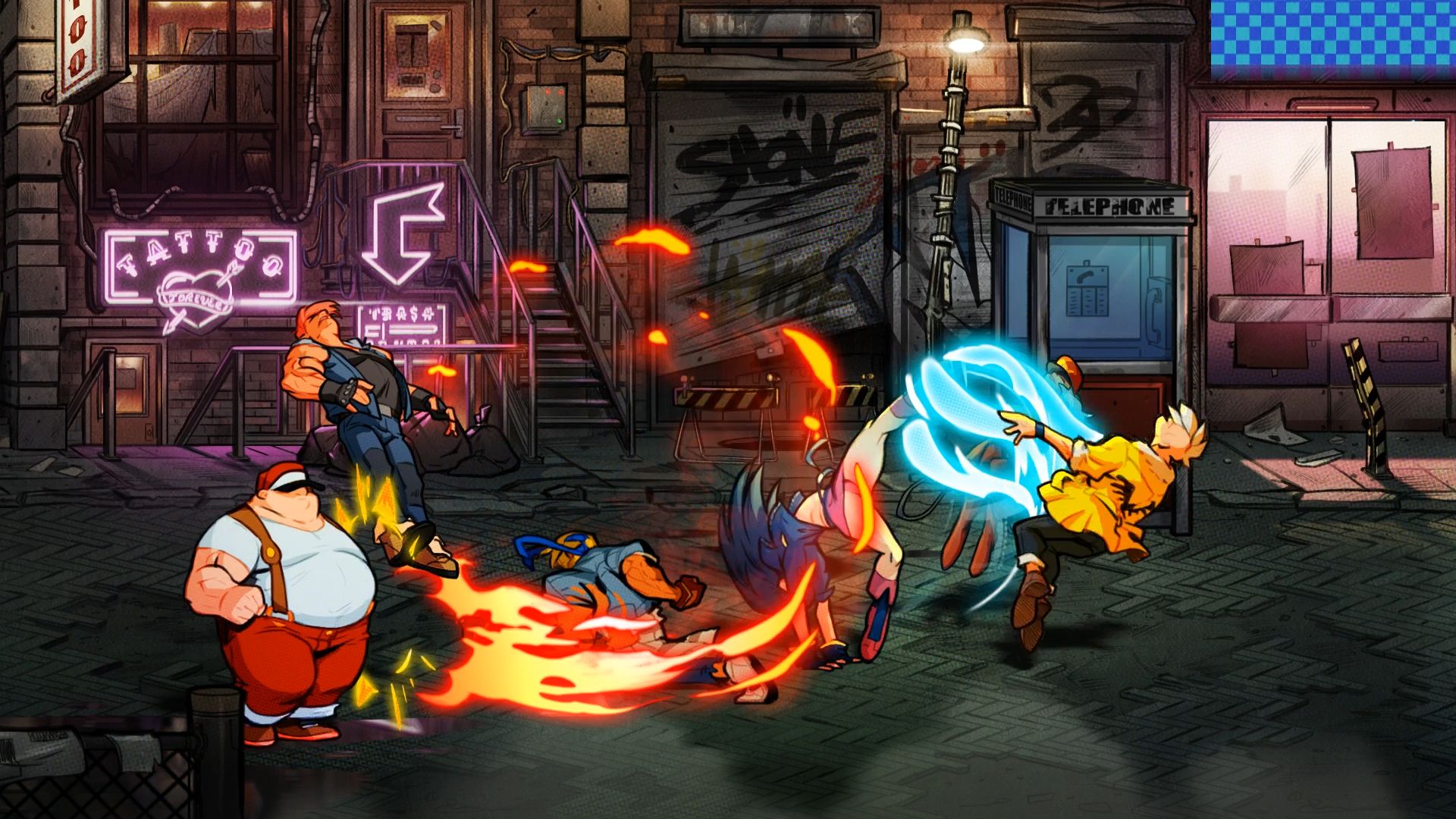Streets of Rage 4 is a retro revival done right
A flashy modern art style and new ideas freshen up a classic arcade series.

DotEmu delivered a one-two punch of nostalgia with the recent announcements of Windjammers 2 and Streets of Rage 4. It’s still difficult to believe that these two classics are both being revived simultaneously: both series have been dormant since 1994, and while Windjammers has always enjoyed cult status along with renewed interest stemming from the recent PS4 port, Streets of Rage abruptly dropped off the face of the planet 24 years ago.
Axel Stone and Blaze Fielding are back, though we were only able to play as Axel for the PAX West demo. Dropping into the neon-soaked streets and dingy alleys imparts an immediate sense of familiarity. Aside from the lack of pixel art, it’s as if no time has passed at all. There was still the familiar rhythm of alternating between rearranging the faces of myriad mooks and destroying crates so that I could devour succulent chicken off of the floor. Enemies will still punish every wayward second of hesitation with their own aggression. Even hearing the placeholder music—assorted tracks from Streets of Rage 2—feels like moving back into a childhood home.
A visually arresting hand-drawn new art style has proven an exquisite renovation to that childhood home. Motions are fluid, the colors are vivid, and Axel’s fiery special moves dazzle and act as the perfect show piece for Streets of Rage 4’s new aesthetic. The only area in which the visuals occasionally falter is with the sheer density of enemies that are sometimes present and the ensuing confusion they can create.
Though we only saw a handful of stages and enemies, there was no absence of intensity.
No context is given, and why Axel and Blaze are beating late '80s street punks to a pulp is a mystery. The developers are cheeky about the series staple villain, Mr. X, returning, too. We don’t know what the deal is right now, but given that one of the reasons for Streets of Rage 3’s lukewarm reception involved the increased emphasis on cutscenes and storytelling, that seems to be part of a conscious effort to focus purely on satisfying combat.
Like the arcade classics, the controls are deceptively simple: You have one button to jump, one button to attack, and one button for a special move that drains a small amount of life in exchange for being extra potent. From there you can use a variety of directional inputs to perform new attacks and grapples. Tapping forward on the d-pad twice before inputting a regular attack will cause Axel to scrape his knuckles across the floor in the wind-up to an incredible burning uppercut.
Enemies clad with luminous Mohawks, or skimpy clothes and whips, or distended bellies and gouts of flames protruding from their mouths crowd the screen and rush you down. Lives were plentiful in the demo we played, but enemies presented a clear and present danger. Though we only saw a handful of stages and enemies, there was no absence of intensity.

New to the series is a Bloodborne-esque rally system that rewards relentless aggression. The health drained by your special moves is represented on your life bar in a muted grey-green. You can recover that health in spurts with successive attacks, but if you're hit you lose that health for good.
Keep up to date with the most important stories and the best deals, as picked by the PC Gamer team.
That's one of the ways in which Streets of Rage 4 seems to encourage high-risk, high-reward play. Friendly fire was also turned on for the demo we played, which added a new dimension of carefully managing your screen real estate while controlling crowds. As such it felt extra rewarding to juggle enemies between yourself and your partner. If you get the positioning wrong, you will hit your partner or be unable to continue the juggle, but get it right and knocking an enemy around turns into a raucous game of volleyball.
Streets of Rage 4 revels in its late '80s punk rock aesthetic and plays as though it was freshly extracted from some '90s arcade machine that never was. It’s wild that in the late 2010s we’re getting a new installment in the series, but best of all is that it shows a ton of beauty and promise.

